Journal of Biomaterials and Nanobiotechnology
Vol.4 No.2A(2013), Article ID:29849,9 pages DOI:10.4236/jbnb.2013.42A004
Catalytic Activity of Amino Acids-Metal Complexes in Oxidation Reactions
![]()
1Department of Biotechnology, “Professor Assen Zlatarov” University, Burgas, Bulgaria; 2Department of Materials Science, “Professor Assen Zlatarov” University, Burgas, Bulgaria; 3Department of Inorganic Chemistry, “Professor Assen Zlatarov” University, Burgas, Bulgaria.
Email: kvasilev@btu.bg, sturmanova@btu.bg,
Copyright © 2013 Krassimir Vassilev et al. This is an open access article distributed under the Creative Commons Attribution License, which permits unrestricted use, distribution, and reproduction in any medium, provided the original work is properly cited.
Received January 20th, 2013; revised February 25th, 2013; accepted April 6th, 2013
Keywords: DL-Lysine; L-Methionine; Metal Complexes; Structure; Properties; Catalysis; Oxidation
ABSTRACT
Studies were carried out to determine the activity of complexes of the essential amino acids DL-Lysine and L-Methionine with heavy metals in the oxidation of cyclohexene with tert-butylhydroperoxide in toluene at 80˚C. All complexes were prepared through interaction of metal ions and DL-Lysine and L-Methionine at room temperature in aqueous solutions. Only the complexes of Mo and W were obtained from acidic aqueous solution. These complexes were characterized by FT-IR, Moessbauer spectroscopy and EPR analysis. The products of the oxidation reactions were identified by GC/MS analysis. The complexes of Mo and V showed the best activity in the epoxidation reaction of cyclohexene in comparison with other complexes, such as Ni, Mn, Zn, Co, Cu, Cr, Fe and W. Using semi-empirical quantum-chemistry methods, the full energy of the Mo complexes was calculated and their probable structure is presented.
1. Introduction
Reactions between oxygen and organic compounds have a major role in living organisms, because the produced energy is used to power all biochemical systems. Catalysis in biological systems is attributed to the need to optimize three aspects of the catalytic process simultaneously: selectivity, rate and stability. Higher selectivity, rate and stability in biological systems provide evolutionary advantages of certain forms over those having biologically less adaptable and unstable systems.
The epoxidation of alkenes is among the main reactions in the chemical industry. Epoxy compounds can react with amines, phenols and others containing active oxygen and act as intermediate compounds in the synthesis of pesticides, pharmaceutical and perfumery products, polyethers and so on. Mo complexes are known to be efficient catalysts in the epoxidation of alkenes with organic hydroperoxides. The use of other transition metal ions in the form of homogeneous or heterogeneous catalysts has also been described [1,2].
Polymer coated Cu(II) complexes with L-phenylalanine and L-valine were obtained and used as catalysts for the epoxidation of alkenes with m-chloroperbenzoic acid. The selectivity for the obtained epoxide was 92% - 94% [3]. Polymer-anchored amino acid ruthenium complexes were used as epoxidation catalysts. The polymer carrier was Merrifield resin with valine attached to it and treated with ruthenium(III) chloride. Selective epoxidation with norbornylene and cyclooctene was observed while for styrene, benzaldehyde and acetophenone were obtained besides epoxy [4]. Efficient epoxidation catalysts were obtained on the basis of tungsten oxide [5] and molybdenum tricarbonyl [6]. New catalysts were also obtained through the treatment of МСМ-41 molecular sieve with 3-aminopropyl-trimethoxysilane and acetylacetone [7].
The donor properties of the amino acid methionine were investigated for a number of transition and nontransition metal ions, such as Cr(III), Fe(III), Cu(II), Al(III), Ag(I) and Bi(III) [8]. The kinetics of the reaction between tetrachloroaurates (III) and L-Methionine were studied spectrophotometrically using a stopped-flow technique at different temperatures [9]. Schiff bases derived from 2-nitrobenzaldehyde with the amino acids glycine and methionine and their Co(II), Ni(II) and Cu(II) complexes were synthesized and characterized [10]. The complexes of Mn-lysine [11], Pd-lysine [12] and Culysine [13] were also obtained and characterized The present paper is a continuation of the authors’ studies on the preparation and characterization of complexes of glutathione [14], histidine [15] and others [16] with heavy metal ions. The aim of the present work is to prepare metal complexes of DL-Lysine, L-Methionine and to study their catalytic activity in the model oxidation reaction of cyclohexene with tert-butylhydroperoxide.
2. Experimental
2.1. Materials
Chemicals
Na2MoO4·2H2O, CuCl2·2H2O Cr(NO3)3·9H2O ZnSO4·4H2O were purchased from Fluka, Switzerland; VOSO4·5H2O FeCl2·4H2O NiCl2·6H2O MnCl2·4H2O from Merck Germany; CoCl2·6H2O from Chemapol Praha; Na2WO4·2H2O from Aldrich; DL-Lysine and L-Methionine from Reanal, Budapest, Hungary. Toluene was a product of Lukoil Neftochim, Burgas, Bulgaria. Cyclohexene (Fluka, Switzerland) was purified by distillation before use. Tertbutylhydroperoxide (t-BHP) was purchased from Fluka, Switzerland and was purified by vacuum distillation at 32˚C - 33˚C.
2.2. Preparation of Molybdenum Complex
0.3 g lysine (1.64 × 10−3 М) was added to 20 ml double-distilled water and the solution obtained was acidified with dilute HNO3 to reach pH ~ 2.2. Then, 0.2 g Na2MoO4·2H2O (8.21 × 10−4 M) were added to 20 ml water and the solution was also acidified with dilute HNO3 until pH ~ 2.2. Both solutions were mixed at room temperature under intense stirring. The precipitate obtained was filtered, washed with double-distilled water and dried to constant weight. The complexes obtained were then subjected to analysis for the presence of molybdenum. W complexes were obtained using the same method.
2.3. Preparation of Vanadium Complex
The complex between VOSO4·5H2O and lysine was prepared in aqueous-alcoholic solution at room temperature: 0.3 g lysine (1.64 × 10−3 М) was dissolved in 10 ml water. The solution was added to 20 ml aqueous-alcoholic solution of VOSO4·5H2O (0.21 g, 8.21 × 10−4 M). The aqueous-alcoholic solution was stirred with a magnetic stirrer for 10 - 12 hrs. The precipitate containing the complex was then filtered, washed repeatedly with ethyl alcohol and dried in vacuum at room temperature to constantweight. The complexes obtained were subjected to analy-
sis to determine the contents of VO2+. The other complexes with Cu, Co, Fe, Ni, Mn, Zn and Cr were prepared by the same method. The complexes with methionine were obtained in the same way.
2.4. Determination of Metal Ions Content in the Amino Acid Complexes
The amount of metal ions was determined by complexation with potassium using a UNIGAN 8625 UV/VIS spectrometer at wave lengths (λmax, nm), as follows: Mo λ = 460 nm (rhodanide); Cо λ = 620 nm (rhodanide); V λ = 450 nm (hydrogen peroxide); W λ = 405 nm (rhodanide complex). Cu, Cr, Mn, Ni, Zn and Fe were determined with a Varian AA240 atomic absorption spectrometer.
2.5. Oxidation of Cyclohexene
Cyclohexene was oxidized with t-BHP in a batch glass reactor equipped with a magnetic stirrer at T = 80˚C for 90 min.
The following reagents were introduced into the reaction vessel:
Content: 5 × 10−3 mmol mеtal/l (the catalysts were in powder form in all cases); 0.1 ml t-BHP (0.081 g; 8.79 × 10−4 M); 1.0 ml cyclohexene (0.8 g, 9.8 × 10−3 M); 4.0 ml toluene (solvent).
3. Analyses
3.1. FT-IR Analysis
FT-IR spectra of DL-Lysine, L-Methionine and their metal complexes were taken using a Bruker spectrophotometer (Germany) and FT-IR Tensor-27 in the interval 4000 - 400 cm−1; and the samples were prepared as KBr pellets.
3.2. GC/MS Analysis
An aliquot (0.1 µl) was injected into a GC/MS Varian 450-GC equipped with a Factor Four capillary column. Initial oven temperature was 50˚C (5 min) and programmed to 100˚C (10 min/min). Average linear velocity was 1 cm3/min. The carrier gas used was helium. The detector was scanned over the 40 - 400 m/z range to confirm the retention times of the analysis. To determine the products, selected ion monitoring (SIM) was performed and two characteristic fragment ions were monitored in addition to the molecular ion.
3.3. EPR Analysis
The electron paramagnetic resonance (EPR) spectra of the metal complexes were obtained at room temperature on a Bruker 200 DSRC spectrometer (Germany) operating in the X-range, at frequency of magnetic field modulation 100 кНz and rectangular resonator ТЕ102.
3.4. Moessbauer Analysis
Moessbauer spectra of Fe3+ complexes were recorded on an electromechanical spectrometer (Wissenschaftliche Elektronik GmbH, Germany) under regime of constant acceleration. The source used was 57Со with activity of 20 mCi deposited on Cr matrix. The rate gauge was calibrated by using 25 μm thick α-Fe foil. The samples were studied at room temperature. The Moessbauer spectra obtained were computer processed by the least squares method using Lorents shaped curves and deconvolution. The experimental spectra were mathematically worked out using a program based on the method of iteration optimization of initial approximations (least squares method).
4. Results and Discussion
The amino acids in the composition and structure of the proteins are twelve, the number and their combinations varying in the different proteins. They can be classified as essential (or indispensable) and non-essential. The amino acids that cannot be synthesized by the organism and are supplied only in the diet have diverse functions. For example, lysine (Figure 1) stimulates the appropriate calcium absorption for the formation of collagen when building cartilage and connective tissue. Lysine deficiency may lead to fatigue, retarded growth, anemia and infertility. Methionine (Figure 2) is the main supplier of sulphur for the body. This amino acid can prevent skin, hair and nail problems and is responsible for the normal level of cholesterol in living organisms by increasing the production of lecithin in the liver.
Metal ions also participate in biological oxidation processes. Only metal ions capable of changing their oxidation degree under certain conditions are active in these catalytic reactions.
Table 1 shows the absorption peaks of the amino acids
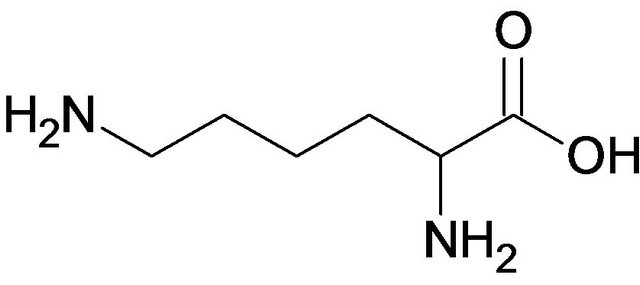
Figure 1. Lys pK COOH-(2.16); pK 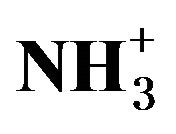 (9.06); content in protein, % (5.9), pK side chaim (ε-
(9.06); content in protein, % (5.9), pK side chaim (ε- ) 10.54.
) 10.54.

Figure 2. Меt pK COOH(2.13); pK  (9.28); content in protein, % (2.2).
(9.28); content in protein, % (2.2).
lysine and methionine and their complexes with 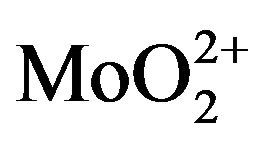 and VO2+ cations. A shift of the band was observed at 1585 сm−1, which is characteristic of the symmetrical fluctuations of the
and VO2+ cations. A shift of the band was observed at 1585 сm−1, which is characteristic of the symmetrical fluctuations of the 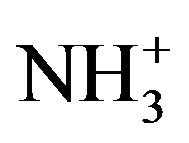 group after complexation, at 1530 сm−1 for the vanadyl and 1520 сm−1 for the molybdenyl complex respectively. The band at 1620 сm−1, characteristic of the asymmetrical fluctuations of the carboxylate anion, also shifted after complexation at 1560 сm−1 and 1600 сm−1. The formation of a complex between the lysine and the molybdenyl ions led to the appearance of new bands at 875 сm−1 and 780 сm−1, characteristic of the V=O group [17]. New absorption bands were also observed for the Mo complex: at 920 сm−1, typical of Mo=O [16,18], and at 790 сm−1, characteristic of the asymmetrical fluctuations of the Mo-O-Mo bonds [18]. Similar shifts of the ammonium group and the carboxylate anion as well as the appearance of new bands characteristic of the V=O and Mo=O groups were observed for the complexes of vanadyl and molybdenyl ions with the methionine amino acid (Table 1).
group after complexation, at 1530 сm−1 for the vanadyl and 1520 сm−1 for the molybdenyl complex respectively. The band at 1620 сm−1, characteristic of the asymmetrical fluctuations of the carboxylate anion, also shifted after complexation at 1560 сm−1 and 1600 сm−1. The formation of a complex between the lysine and the molybdenyl ions led to the appearance of new bands at 875 сm−1 and 780 сm−1, characteristic of the V=O group [17]. New absorption bands were also observed for the Mo complex: at 920 сm−1, typical of Mo=O [16,18], and at 790 сm−1, characteristic of the asymmetrical fluctuations of the Mo-O-Mo bonds [18]. Similar shifts of the ammonium group and the carboxylate anion as well as the appearance of new bands characteristic of the V=O and Mo=O groups were observed for the complexes of vanadyl and molybdenyl ions with the methionine amino acid (Table 1).
Figure 3 shows the Moessbauer spectrum of the complex of lysine with Fe ions. The experimental Moessbauer spectrum measured for the lysine complex was a doublet and had isomer shift values of about 0.37 mm/s.
Since lysine, an amino acid, does not contain iron, the spectrum observed can not be related to iron ions bonded to this amino acid in a complex or iron containing minerals (oxides, hydroxides). The Moessbauer spectra calculated are included in Table 2.
Table 1. FT-IR data for α-amino acids and their complexes (cm−1).
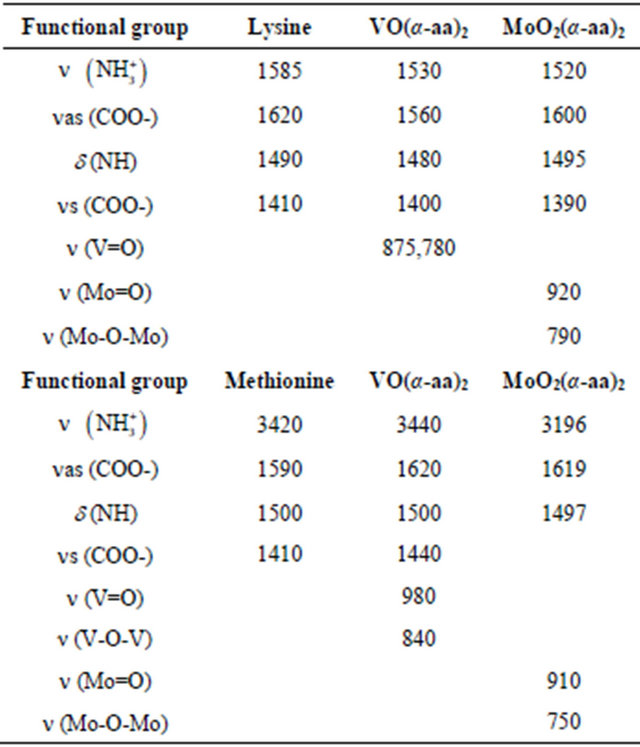

Figure 3. Moessbauer spectrum of lysine-Fe complex at room temperature.
Table 2. Parameters of the Moessbauer spectra.

According to the isomer shift values, the spectrum parameters were found to be characteristic of the high spin Fe3+ ions in octahedral coordination. Only Fe3+ ions were registered in the Moessbauer spectrum of lysine. According to the values of the isomer shift values, all Fe ions (Fe2+ and Fe3+) in both samples were found to be in octahedral coordination. The relatively high values of the quadrupole split for all doublets indicated a significant deformation of the charge field of the Fe ions due to asymmetry.
The broader lines for a single component in the spectrum could be explained by the presence of Fe ions in non-equivalent states (positions) which have close parameters.
The EPR spectrum of lysine—VO2+ is presented in Figure 4. The EPR spectra calculated are included in Table 3.
To decide which donor atom of the amino acid (O or N) is coordinated to the VO ion relevant data were looked for in the literature. One source [19] reported a link only between the isotropic EPR parameters of the vanadyl complexes and different donor atoms. For this reason, the table also shows values of Aiso and giso [Aiso = (AII + A^)/2; giso= (gII + g^)/2].
The lower donor properties of the N atoms (compared to the O ones) determine the formation of a VON4 complex (vanadyl lysine). The EPR spectrum shows that the
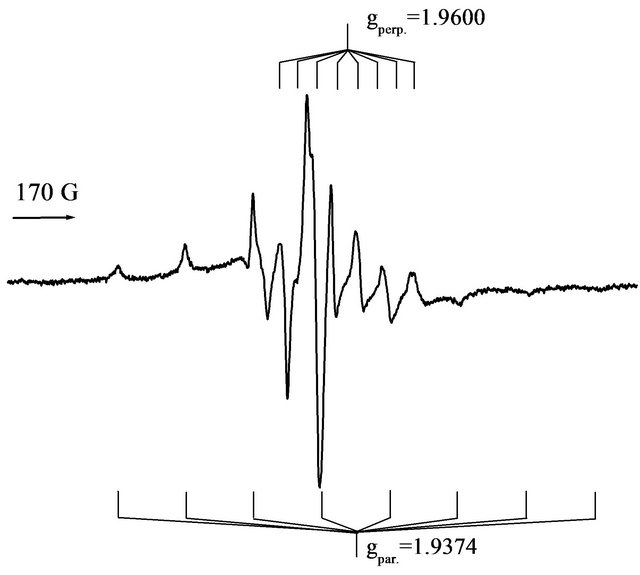
Figure 4. EPR spectrum of Lysine—VO2+ complex.
complex has axial symmetry. At lower symmetry in the EPR spectrum 24 superfine lines (8 in each direction x, y, z) could be expected. Despite the presence of a nuclear spin у 14N (I = 1), no superfine interaction was observed because the uncoupled electron of V(IV) is situated on the dxy orbital, which does not overlap with the atomic orbitals of the N atoms and the electron-nucleus interaction is very weak.
Eleven out of the expected 16 lines in the EPR spectrum (8 in parallel and 8 in perpendicular orientation) were registered. All transitions in parallel orientation and 3 of the transitions in perpendicular orientation were well allowed.
Another problem that the authors have solved in the present research is the optimization of the geometry of the obtained complex compounds of the lysine and methionine amino acids with Мо(VI) using semi-empirical quantum-chemistry methods and studying their electronic structure.
The quantum-chemistry calculations and the analysis of the electron configuration of co-ordination compounds of transition metals allows to clarify the origin of their physical and chemical properties at electron level, as well as to predict some of the substance properties. This must be done mostly because of their wide use in catalysis and the important role they play in biological processes. For this purpose, the geometry was optimized and the electronic structure was calculated for eight of the coordination compounds of Mo(VI) with some amino acids (lysine and methionine) obtained. All the calculations were carried out by the semi-empirical quantum chemistry method ZINDO/1 in the HyperChem 6.0 software package, using standard parametrization for the molybdenum atom.
The molecular structures were preliminarily determined using the molecular mechanics from the same software package. For the quantum-chemistry calculations the optimization algorithm of Fletcher-Reeves was applied. Closed-shell molecules are usually calculated with the approximation of the Restricted Hartree-Fock method (RHF), also known as the Spin-Restricted Hartree-Fock method.
The following characteristics are known about the stereochemistry of coordination compounds with transition metals with d0 electron configuration and multiple-binding ligands, such as Мо(VІ) compounds [20,21]:
Multiple-binding ligands (О=, N≡) are situated in cis-position to one another;
The introduction of a multiple-binding ligand to a
σ-binded octahedral complex leads to considerable lengthening of the bond in trans-position to the substitute.
The results obtained for some bond lengths in coordination compounds are presented in Table 4.
The occupation of the molecular orbitals (MO) is also related to the charge distribution in a molecule, that is the pure charges of the atom. If on МО χj there are nj electrons (nj = 0, 1 or 2), then 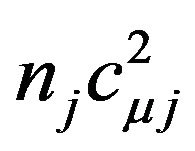 (where cµj is the coefficient before АО χµ in МО χj) is equal (in zero differential overlap approximation) to the partial electron occupation of the respective AO.
(where cµj is the coefficient before АО χµ in МО χj) is equal (in zero differential overlap approximation) to the partial electron occupation of the respective AO.
According to this approximation (on which the ZINDO/1 method is based too), АО of the different atoms are regarded as orthogonal and consequently the overlap integrals are taken to be equal to zero. The total occupation of AO is worked out by adding up all partial occupations along all occupied MO in which the AO takes part. The total occupation of an atom in a molecule is the sum of the occupations of all its AO. The formulaic expression of the above is as follows:
Рμj (partial occupation of АО χμ) = ;
;
Рμ (total occupation of АО χμ) = Σ j ;
;
РA (occupation of atom А) = ΣμРμ.
Then the pure charge of the atom is qA = ZA − PAwhere ZA is the charge of the nucleus.
The analysis of the occupation of AO of molybdenum leads to an electron configuration of the valence electron layer of 4d3.855s0.4225p1.15, which indicates a transfer of electron density from the ligand molecules to the free orbitals of molybdenum and hence the occupation of the 5sand 5p-atomic orbitals of molybdenum is overvalued. (Table 5) This result may lead to the incorrect conclusion that there is a stronger coordination bond than in reality, but it is typical of the semi-empirical quantumchemistry methods. This higher occupation of the molybdenum AO leads to a strong reduction of the positive charge of the atom in comparison with the complexes of Mo(VІ) with other amino acids.
The last two columns of Table 6 show the energies of the highest occupied molecular orbital (HOMO), as well
Table 3. Parameters of the EPR spectra.

Table 4. Calculated bond lengths (Å) metal-ligand of co-ordination compounds of Mo(VI) with representatives of amino acids.

Table 5. AO occupations of molybdenum in the studied complexes.

Table 6. Results obtained from the calculations of the electronic structure of the complexes of molybdenum with some amino acids.

Table 7. Comparison of the obtained structures with regards to their energy (a.u) and (kcal/mol) and the experimental yield data cyclohexene oxide, %.

as that of the lowest occupied molecular orbital (LUMO). They are called frontier MO and to a great extent they determine the molecular system as steric system by the substitution of ligands and its chemical reactivity (Figures 5 and 6).
The processes involving homogeneous, heterogeneous and immobilized catalytic systems play an important role in the chemical industry. The oxidation of alkenes is a method for direct introduction of oxygen. These processes require the presence of a complex of a transition metal and a source of oxygen.
The immobilized complexes obtained were studied in the reaction of oxidation of cyclohexene. These results were corresponded with full energy of complexes (Table 7). Table 8 shows the experimental data for the complexes of the amino acid lysine and Table 9 shows the respective data for the complexes of the amino acid methionine.
All reactions were carried out in a batch reactor under the same conditions.
As can be seen from Tables 8 and 9, high yields of cyclohexene oxide were obtained using molybdenum complexes: 41.5% with lysine and 36.2% with methionine (Table 7). Lower yields were obtained using the vanadium complexes of lysine and methionine, 21.5% and 29.1% respectively. The obtained results correlate with the literature data reported in [1,22], which report that metals with high oxidation potential and low Lewis acidity are efficient catalysts for the epoxidation of alkenes. Exceptions in this respect are the tungsten complexes of lysine and methionine, with which the yields of cyclohexene oxide were 10.3% and 1.1% respectively. As for the rest of the complexes, a relatively higher yield of cyclohexene oxide was obtained using the copper complex of methionine: 11.4%. In the reactions of all the other complexes the product from the allylic oxidation of cyclohexene, namely 2-cyclohexene-1-ol, was the uppermost. The yield of this compound was the highest when using complexes of vanadyl, tungstenyl and iron ions with lysine complexes, as well as methionine-iron complexes. Their activity was between 10.7% and 12.4%. In the authors’ previous studies of the histidine amino acid as a ligand [15], the yield of cyclohexene oxide with the molybdenum complex of histidine was 54.8% and 33.3% with vanadium as such. The authors proved that different products are obtained depending on the transition metal ion. It is known from the literature that, depending on the conditions of the reaction and the applied catalytic system, it is possible to obtain around 70 different products in the oxidation of cyclohexene [23]. In a previous work [15], the authors determined three major products: cyclohexene oxide, 2-cyclohexene-1-ol and 2-cyclohexene-1- one. When comparing the experimental results of the complexes of the three amino acids, it is evident that the “third ligand” of the amino acid (the imidazole nucleus of histidine, the amino group of lysine and the thiomethyl group of methionine) also has an effect on the activity.
Scheme 1 shows the reactions where the three major products are obtained. Reaction (1) is the main one: tertbutylhydroperoxide epoxidizes cyclohexene to cyclohexene oxide in the presence of the respective catalyst. Reactions (2) and (3) are side reactions. Reaction (2) is the oxidation of cyclohexene to cyclohexenyl hydroperoxide in the presence of oxygen. This reaction is competetive to the epoxidation because cyclohexene contains an allylic carbon atom. In reaction (3) cyclohexenyl hydroperoxide
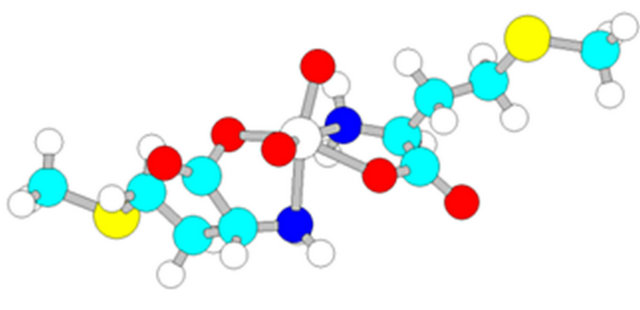
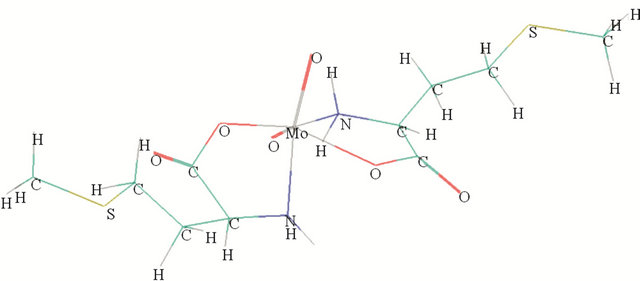
Figure 5. Stereostructurе (Methioninе)2-MoO2 /semi-empirical/ ZINDO/1/, Symbol/Bond length, Å. Symbol: Mo—white center, O—red, N—blue, C—light blue, S—yellow, H—white.
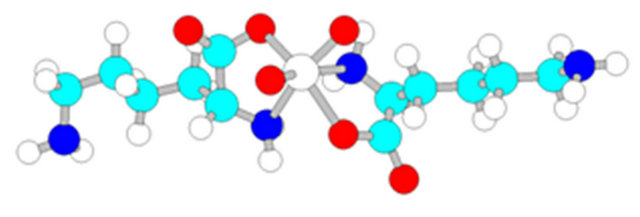

Figure 6. Stereostructurе (Lysine)2-MoO2 /semi-empirical/ ZINDO/1/ Symbol/Bond length, Å. Symbol: Mo—white center, O—red, N—blue, C—light blue, H—white.
Table 8. Oxidation of cyclohexene with tert-butylhydroperoxide in the presence of different complexes with the amino acid lysine.
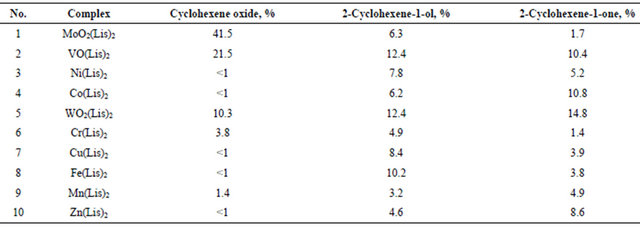
Table 9. Oxidation of cyclohexene with tert-butylhydroperoxide in the presence of different complexes with the amino acid methionine.

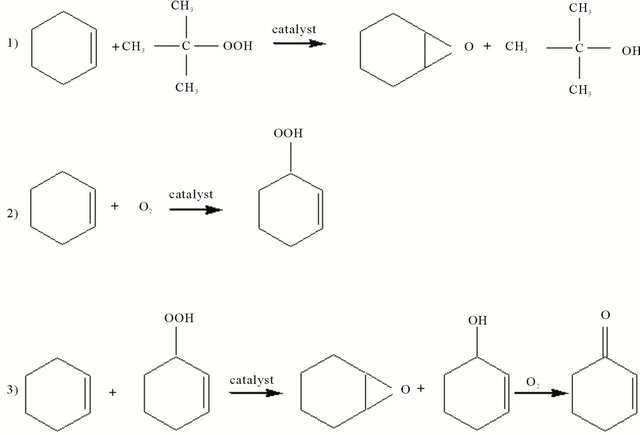
Scheme 1. Obtaining oxygen-containing products in the oxidation of cyclohexene.
can simultaneously epoxidize and oxidize cyclohexene to 2-cyclohexene-1-ol. The obtained seconddary alcohol can be oxidized to 2-cyclohexene-1-one.
5. Conclusions
The possibilities of using amino acid complexes as catalysts in the model reaction of oxidation of cyclohexene in the presence of tert-butylhydroperoxide are newly demonstrated. The optimal conditions for the formation of complexes between the L-lysine, methionine and heavy metal ions were established.
It was found out that the order of catalytic activity of the complexes in the reaction of epoxidation of cyclohexene with tert-butylhydroperoxide was as follows: Mo > V > Cu > W, while in the reaction of hydroxylation it was W = V > Fe > Cu.
6. Acknowledgements
The authors would like to express their gratitude to the Operating Programme Human Resources Development; Grant agreement: BG051PO001/3.3-05-001 “Science and Business”, funded by EC, European Social Fund for their financial support.
REFERENCES
- K. A. Jorgensen, “Transition-Metal-Catalyzed Epoxidations,” Chemical Reviews, Vol. 89, No. 3, 1989, pp. 431- 458. doi:10.1021/cr00093a001
- Q. H. Xia, H. Ge, C. Ye, Z. Liu and K. Su, “Advances in Homogegeneous and Heterogeneous Catalytic Asymmetric Epoxidation,” Chemical Reviews, Vol. 105, No. 5, 2005, pp. 1603-1662. doi:10.1021/cr0406458
- V. B. Valodkar, G. Tembe, R. Ram and H. Rama, “Catalytic Asymmetric Epoxidation of Unfunctionalized Olefins by Supported Cu(II)-Amino Acid Complexes,” Catalysis Letters, Vol. 90, No. 1-2, 2003, pp. 91-94. doi:10.1023/A:1025828629486
- V. B. Valodkar, G. Tembe, M. Ravindranathan and H. Rama, “Catalytic Epoxidation of Olefins by PolymerAnchored Amino Acid Ruthenium Complexes,” Reactive and Functional Polymers, Vol. 56, No. 1, 2003, pp. 1-15. doi:10.1016/S1381-5148(03)00048-8
- K. Kamata, K. Yonehara, Y. Sumida, K. Hirata, S. Nojima and N. Mizuno, “Efficient Heterogeneous Epoxidation of Alkenes by a Supported Tungsten Oxide Catalyst,” Angewandte Chemie International Edition, Vol. 50, No. 50, 2011, pp. 12062-12066. doi:10.1002/anie.201106064
- M. Abrantes, F. Paz, A. Valente, C. Pereira, S. Gago, A. Rodriges, J. Klinowski, M. Pillinger and I. Goncalves, “Aminoacid-Functionalized Cyclopentadienyl Molybdenum Tricarbonyl Complex and Its Use in Catalytic Olefin Epoxidation,” Journal of Organometallic Chemistry, Vol. 694, No. 12, 2009, pp. 1826-1833. doi:10.1016/j.jorganchem.2009.01.012
- M. Masteri-Farahani, “New Molybdenum Epoxidation Catalyst Derived from Nanoporous MCM-41 Supported Glycine Schiff-Base,” Journal of Nanostructures, Vol. 2, No. 1, 2012, pp. 43-50.
- C. A. McAuliffe, J. Quagliano and L. Vallarino, “Metal Complexes of the Amino Acid DL-Methionine,” Inorganic Chemistry, Vol. 5, No. 11, 1966, pp. 1996-2003. doi:10.1021/ic50045a034
- V. Vujacic, J. Savic, S. Sovilj, K. Szecsenyi, N. Todorovic, M. Petkovic and V. Vasic, “Mechnism of Complex Formation between [AuCl4]− and L-Methionine,” Polyhedron, Vol. 28, No. 3, 2009, pp. 593-599. doi:10.1016/j.poly.2008.11.045
- B. K. Singh, H. Rajour and A. Prakash, “Synthesis, Characterization and Biological Activity of Transition Metal Complexes with Schiff Bases Derived from 2-Nitrobenzaldehyde with Glycine and Methionine,” Spectrochimica Acta Part A: Molecular and Biomolecular Spectroscopy, Vol. 94, 2012, pp. 143-151. doi:10.1016/j.saa.2012.03.077
- M. H. Khodabandeh, H. Reisi, K. Zare and M. Zahedi, “A Theoretical Elucidation of Coordination Properties of Histidine and Lysine to Mn(II),” International Journal of Mass Spectrometry, Vol. 313, No. 1, 2012, pp. 47-57. doi:10.1016/j.ijms.2011.12.019
- Y. Z. Hao, Z. Li and J. Tian, “Synthesis, Chracteristics and Catalytic Activity of Water-Soluble [Pd(lysine·HCl)(Cl)2] Complex as Hydrogenation Catalyst,” Journal of Molecular Catalysis, A: Chemical, Vol. 265, No. 1, 2007, pp. 258-267. doi:10.1016/j.molcata.2006.09.045
- O. Cozar, I. Bratu, L. Szabo, I. Cozar, V. Chic and L. David, “IR and ESR Study of Copper(II) Complexes with 15N-Labelled Lysine and Ornithine,” Journal of Molecular Structure, Vol. 993, No. 1-3, 2011, pp. 397-403. doi:10.1016/j.molstruc.2011.02.001
- M. Dimitrova, S. Turmanova and K. Vassilev, “Complexes of Glutathione with Heavy Metals as Catalysts for Oxidation,” Reaction Kinetics, Mechanisms and Catalysis, Vol. 9, No. 1, 2010, pp. 69-78.
- K. Vassilev, M. Dimitrova, S. Turmanova and R. Milina, “Catalytic Activity of Histidine-Metal Complexes in Oxidation Reaction,” Synthesis and Reactivity in Inorganic, Metal-Organic, and Nano-Metal Chemistry, Vol. 43, No. 3, 2013, pp. 243-249. doi:10.1080/15533174.2012.740713
- S. Turmanova and K. Vassilev, “Molybdenum Complexes: Structure, Properties and Applications,” In: M. Ortiz and T. Herrera, Eds., Molybdenum: Characteristics, Production and Applications, Nova Science Publishers, New York, 2012, pp. 77-116.
- H. A. Kuska and P. Yang, “Effects of Substituents on the Spectroscopic Properties of Tetradentate Ligand-Oxovanadium(IV) Complexes,” Inorganic Chemistry, Vol. 16, No. 8, 1977, pp. 1938-1941. doi:10.1021/ic50174a021
- O. A. Rajan and A. Chakravorty, “Molybdenum Complexes. I. Acceptor Behavior and Related Properties of Mo(VI)O2(Tridentate) Systems,” Inorganic Chemistry, Vol. 20, No. 3, 1981, pp. 660-664. doi:10.1021/ic50217a005
- F. E. Dickson, C. J. Kunesh, E. L. McGinnis and L. Petrakis, “Use of Electron Spin Resonance to Characterize the Vanadium(IV)-Sulfur Species in Petroleum,” Analytical Chemistry, Vol. 44, No. 6, 1972, pp. 978-981. doi:10.1021/ac60314a009
- M. A. Porai-Koshits and A. O. Atovmian, “Crystalo Chemistry and Stereochemistry of Coordination Compounds of Molybdenum,” Nauka, Moscow, 1974, pp. 1-229.
- A. A. Levim and P. N. Dyachkov, “Electronic Structure, Geometry, Isomerism and Transformations of Heteroligand Molecules,” Nauka, Moscow, 1990, pp. 1-256.
- R. A. Sheldon, “Synthetic and Mechanistic Aspects of Metal-Catalysed Epoxidations with Hydroperoxides,” Journal of Molecular Catalysis, Vol. 7, No. 1, 1980, pp. 107- 126. doi:10.1016/0304-5102(80)85010-3
- H. Weiner, A. Trovarelli and R. Finke, “Expanded Product, Plus Kinetic and Mechanistic, Studies of Polyoxoanion-Based Cyclohexene Oxidation Catalysis: The Dedection of 70 Products at Higher Conversion Leading to a Simple, Product-Based Test for the Presence of Olefin Autoxidation,” Journal of Molecular Catalysis, A. Chemical, Vol. 191, No. 2, 2003, pp. 217-252. doi:10.1016/S1381-1169(02)00344-8

